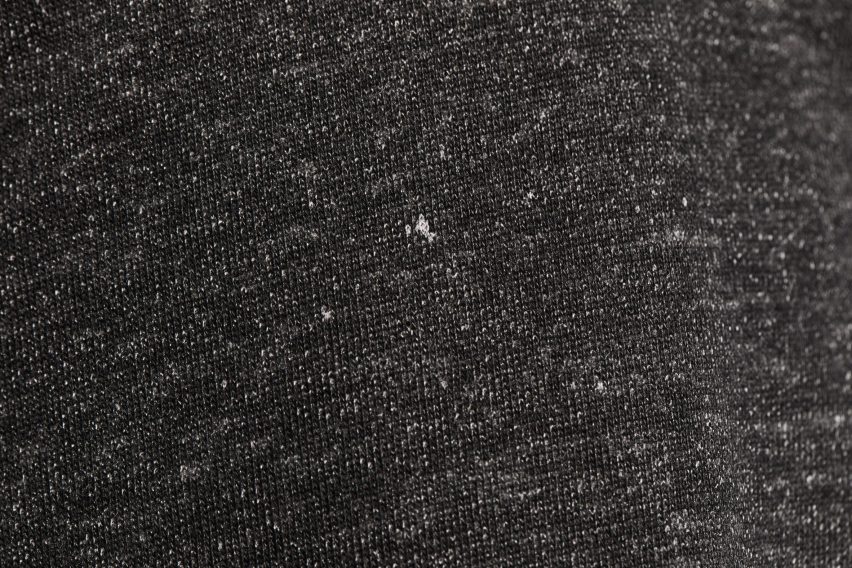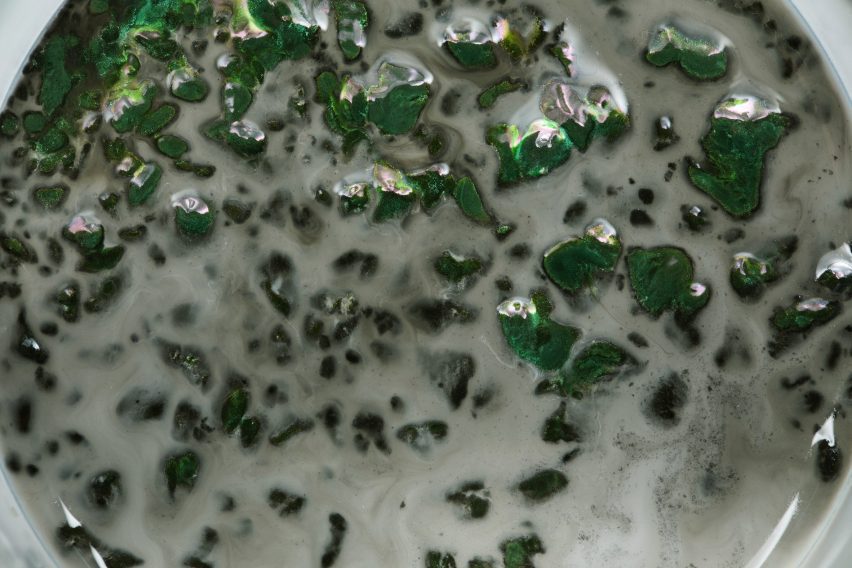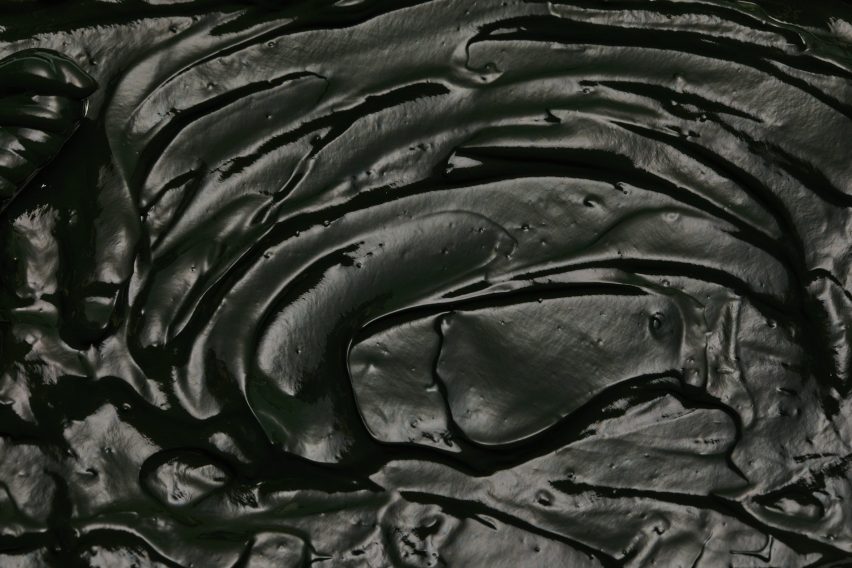
Vollebak tints T-shirt using carbon-storing algae ink
Experimental clothing brand Vollebak has used an ink derived from spirulina algae to colour this top, in a bid to show how fashion could move away from its reliance on black pigments made from heavy crude oil.
The ink is created by heat-treating algae biomass to turn it into a blackened char, which locks away the carbon that was sequestered by the algae throughout its life.
This creates a concentrated black powder pigment that manufacturer Living Ink says is carbon negative, since every kilogram produced removes 4.16 kilograms of CO2 from the atmosphere – as much as was absorbed by the algae.

Mixed with a binder, the pigment is then turned into ink and screen-printed onto the T-shirt, which is made from FSC-certified linen and lyocell derived from wood pulp.
Once the garment has reached the end of its life, it will biodegrade in soil over the course of 12 weeks. But the black pigment will remain stable and continue to store the atmospheric carbon for hundreds or even thousands of years, according to Living Ink co-founder Scott Fulbright.
"The black algae-derived pigments will stay as an inert, safe, stable piece of carbon in the soil," he told Dezeen. "This is essentially storing the sequestered carbon in soil."
At the same time, using the algae ink also avoids the emissions associated with the production of conventional black pigment, known as carbon black, which is used to colour everything from garments to tyres, plastics, paints and even cosmetics.

Carbon black is created by taking heavy petroleum and subjecting it to a process called pyrolysis, in which it is burned in a controlled environment in the absence of oxygen to produce a fine, highly-pigmented powder that's almost pure carbon.
This non-renewable fossil carbon generates emissions throughout its extraction and various refinement steps.
On average, Fulbright says four kilograms of carbon dioxide equivalent (CO2e) are released into the atmosphere for every kilogram of carbon black produced.

The black pigment used by Vollebak on the other hand is made from spirulina algae, which is grown by the natural food colouring industry in huge open-air ponds for the phycocyanin protein that produces its blue-green colour.
Once this colourant is extracted, the remaining algae biomass is put through a similar pyrolysis process of being burned without oxygen, which means the carbon sequestered by the algae cannot form carbon dioxide during combustion.
Instead, the carbon remains and forms a char that is purified and mixed with a water-based acrylic binder. The final result is a UV-resistant ink that lies on top of the fabric, rather than chemically bonding to it like a dye.
"Creating an entirely black garment would usually require dye rather than ink but black algae dye hasn't been invented yet," explained Vollebak co-founder Steve Tidball.
"So we used a regular screen printer to experiment with different quantities of ink. The more ink we used the darker the colour would be, but too much ink would cause the T-shirt to feel stiff."

When the T-shirt is ultimately composted, everything save for the ink will biodegrade. While this will store the carbon in the soil, this also leaves behind the acrylic binder, which Living Ink is currently looking to substitute with a plant-based alternative.
"We are starting to work with companies producing polyurethane binders produced from algae and bacteria," Fulbright explained.
The company is also working out how to improve the pigmentation of the ink by reducing the particle size in a bid to more closely approximate the true black created by fossil-based pigments.

To achieve significant atmospheric carbon reductions, the pigment would need to be produced and utilised at a mass scale.
"18 billion pounds of carbon black is used annually around the world," Fulbright said. "I think by using a wide range of bio-based materials a big dent can be made in this market. But more innovators and raw material suppliers are needed."
Living Ink's algae black ink has previously been used to print a guidebook for the city of Boulder, Colorado.
Other companies creating useful products from pyrolysed biomass include Berlin-based Made of Air, which has developed a carbon-negative bioplastic from forest and farm waste.
The photography is by Sun Lee.